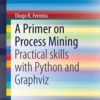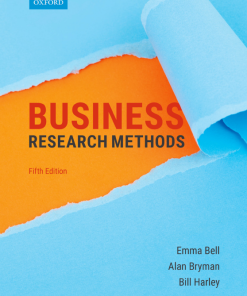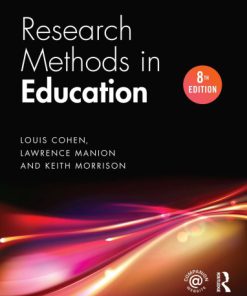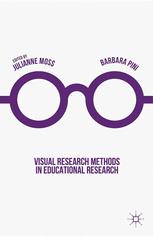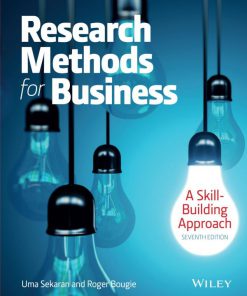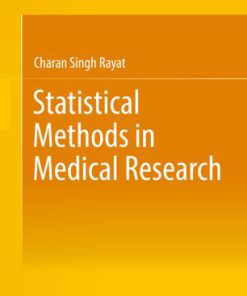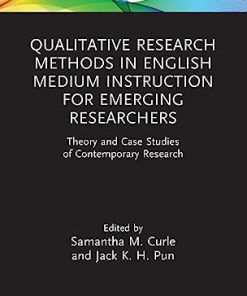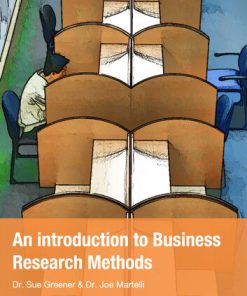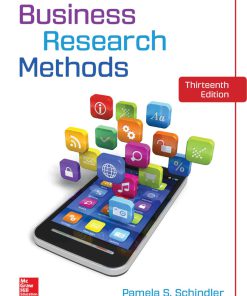Research Methods In Business Studies 1st edition by Pervez Ghauri 1108486743 9781108486743
$50.00 Original price was: $50.00.$25.00Current price is: $25.00.
Research Methods In Business Studies 1st edition by Pervez Ghauri – Ebook PDF Instant Download/DeliveryISBN: 1108486743, 9781108486743
Full download Research Methods In Business Studies 1st edition after payment.
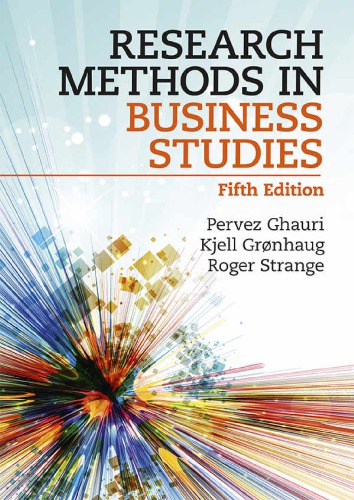
Product details:
ISBN-10 : 1108486743
ISBN-13 : 9781108486743
Author: Pervez Ghauri
This accessible guide provides clear, practical explanations of key research methods in business studies, presenting a step-by-step approach to data collection, analysis and problem solving. Readers will learn how to formulate a research question, choose an appropriate research method, argue and motivate, collect and analyse data, and present findings in a logical and convincing manner. The authors evaluate various qualitative and quantitative methods and their consequences, guiding readers to the most appropriate research design for particular questions. Furthermore, the authors provide instructions on how to write reports and dissertations in a clearly structured and concise style. Now in its fifth edition, this popular textbook includes new and dedicated chapters on data collection for qualitative research, qualitative data analysis, data collection for quantitative research, multiple regression, and additional methods of quantitative analysis. Cases and examples have been updated throughout, increasing the applicability of these research methods across various situations.
Research Methods In Business Studies 1st Table of contents:
Part I Challenges and Ambiguities of Business Research
Chapter 1 Introduction
1.1 Purpose of the Book
1.2 Readership
1.3 On the Use of the Book
Chapter 2 Research in Business Studies
2.1 The Nature of Knowledge Development
2.2 Why We Do Research
2.3 Research versus Common Sense
2.4 Different Research Orientations
2.5 Induction, Deduction, and Abduction
2.6 What Comes First: Theory or Data?
2.7 Knowledge Skills and Research
2.8 Why Research Never Stops
2.9 Research and Ethics
2.10 The Researcher and the Respondent
2.11 The Researcher’s Moral Responsibility
Further Reading
Questions
Exercises
Part II The Research Process
Chapter 3 The Research Process
3.1 The Process Perspective
3.2 Levels of Research
3.3 Research and Knowledge
3.4 What Comes First: Theory or Research?
3.5 Some Important Issues
3.5.1 Concepts
3.5.2 Definitions
3.5.3 Theory
3.5.4 Methods
3.6 Concluding Remarks
Further Reading
Questions
Exercises
Chapter 4 Research Problems
4.1 Research Ideas
4.2 Wrestling with Research Problems
4.3 Research Problem and Research Purpose
4.4 Models in Research
4.4.1 General Concepts and Specific Use
4.4.2 Model Purposes
1. A model may describe how ‘things are’.
2. A model may explain phenomena.
3. A model may be used to predict an outcome.
4. A model may be used to guide business decisions:
4.5 The Role of Reviewing Past Literature
Further Reading
Questions
Exercises
Chapter 5 Research Design
5.1 The Design Problem
5.2 Problem Structure and Research Design
5.2.1 Exploratory Research
5.2.2 Descriptive Research
5.2.3 Causal Research
5.3 The Classic Experiment
5.4 Validity Threats
1. History,
2. Maturation,
3. Test effect
4. Selection bias
5.5 Other Research Designs
5.5.1 Cross-Section Data
5.5.2 Time-Series Data
5.5.3 Longitudinal Studies
5.5.4 Panel Data
5.6 Requirements in Research Design
5.6.1 Research and Choices
Further Reading
Questions
Exercises
Chapter 6 Measurements
6.1 The Operationalization of Variables
6.2 Scales of Measurement
6.2.1 Nominal Level (Scale)
6.2.2 Ordinal Level (Scale)
6.2.3 Interval Level (Scale)
6.2.4 Ratio Scale
6.3 Construct Measurement Using Multi-Item Scales
6.4 The Reliability and Validity of Measurements
6.5 Improving Your Measurements
6.6 Measurements in Qualitative Research
Further Reading
Questions
Exercises
Part III Implementation
Chapter 7 Data Collection for Qualitative Research
7.1 Qualitative versus Quantitative Methods
7.2 Different Qualitative Methods and When to Use Them
7.2.1 Historical Review
7.2.2 Grounded Theory
7.2.3 Case Studies
What Is a Case Study?
When to Use a Case Study
Preparing for a Case Study
How to Select the Cases
Sampling in Qualitative Research
Theoretical Sampling
Different Types of Case Study Design
7.3 Observations
7.4 Communication
7.5 Interviews
7.5.1 Preparing for an Interview
7.5.2 Pre-Interview
7.5.3 The Interview
7.5.4 Post-Interview
7.6 Focus Groups
7.6.1 Advantages and Disadvantages of Focus Groups
7.6.2 Conducting Focus Groups
Further Reading
Questions
Exercises
Chapter 8 Qualitative Data Analysis
8.1 Characteristics of Qualitative Research
8.2 Qualitative Data
8.3 Analytical Procedures
8.3.1 Analytical Activities
Categorization
Abstraction
Comparison
Dimensionalization
Integration
Iteration
Refutation
8.3.2 Data Reduction
Record.
Report.
8.4 Interpretation
8.5 Strategies for Qualitative Analysis
8.5.1 Departure from Theory
8.5.2 Departure from Data (Observations)
8.5.3 Analysing Case Studies
8.6 Quantifying Qualitative Data
8.7 Validity in Qualitative Research
8.8 The Use of Computers in Qualitative Research
8.8.1 A Word of Warning
8.9 Case Studies and Triangulation
8.10 Case Studies and Generalization
Further Reading
Questions
Exercises
Chapter 9 Data Collection for Quantitative Research
9.1 Secondary Data
9.1.1 The Advantages of Secondary Data
9.1.2 The Disadvantages of Secondary Data
9.2 Primary Data
9.2.1 The Advantages of Primary Data
9.2.2 The Disadvantages of Primary Data
9.3 Why Take Samples?
9.4 Probability Sampling
9.4.1 Simple Random Sampling
9.4.2 Systematic Sampling
9.4.3 Stratified Random Sampling
9.4.4 Cluster Sampling
9.4.5 Non-Response Bias
9.5 Non-Probability Sampling
9.6 Sample Size
9.7 Survey Research
9.7.1 Survey Administration
9.7.2 Questionnaire Design
9.7.3 Guidelines for Constructing Questionnaires
9.7.4 Improving Response Rates
9.8 Experimental Studies
Further Reading
Questions
Exercises
Chapter 10 Description and Preliminary Analysis of Quantitative Data
10.1 How to Describe the Data
10.1.1 Bar Charts, Histograms, and Scatter Plots
10.1.2 Measures of Central Tendency
10.1.3 Measures of Dispersion
10.1.4 Measures of Skewness
10.2 How to Analyse the Data
10.2.1 Hypothesis Testing
10.2.2 Comparison of Means (Independent Samples)
Step 1: Specify the null and alternative hypotheses
Step 2: Calculate the test statistic
Step 3: Find the critical value from t-tables
Step 4: Specify the test criterion
10.2.3 Comparison of Means (Paired Samples)
Step 1: Specify the null and alternative hypotheses
Step 2: Calculate the test statistic
Step 3: Find the critical value from t-tables
Step 4: Test criterion
10.2.4 Correlation Coefficient (Continuous Variables)
Step 1: Specify the null and alternative hypotheses
Step 2: Calculate the test statistic
Step 3: Find the critical value from t-tables
Step 4: Test criterion
10.2.5 Correlation Coefficient (Ordinal Variables)
Step 1: Specify the null and alternative hypotheses
Step 2: Calculate the test statistic
Step 3: Find the critical value from normal distribution tables
Step 4: Test criterion
10.2.6 Correlations between Nominal and/or Ordinal Variables
10.3 The Use of Computers in Quantitative Research
Further Reading
Questions
Exercises
Chapter 11 Multiple Regression
11.1 The Determinants of Export Performance
11.2 The Regression Model
11.2.1 Operationalization of the Variables
11.2.2 Functional Form
The Linear Relationship
The Semi-Logarithmic Relationship
The Quadratic Relationship
11.2.3 Time Lags
11.3 Estimation Methodology
11.3.1 OLS Estimation
11.3.2 The Coefficient of Determination
11.3.3 The Assumptions Underpinning OLS Estimation
The Omission of Relevant Explanatory Variables
Multicollinearity
11.3.4 The Residual Plot
11.3.5 Estimation Methodology with Nominal or Ordinal Dependent Variables
11.4 Hypothesis Testing
11.4.1 Testing for the Significance of Individual Regression Coefficients
Step 1: Specify the null hypothesis
Step 2: Calculate the test statistic
Step 3: Find the critical value from t-tables
Step 4: Test criterion
11.4.2 Testing for the Joint Significance of Several Explanatory Variables
Step 1: Specify the null hypothesis
Step 2: Calculate the test statistic
Step 3: Find the critical value from F-tables
Step 4: Test criterion
11.4.3 Testing for Common Method Variance
11.4.4 Statistical Significance and Effect Sizes
11.5 The Determinants of Export Performance Redux
11.6 What Constitutes a Good Regression Model?
Further Reading
Questions
Exercises
Chapter 12 Additional Methods of Quantitative Analysis
12.1 Factor Analysis
12.1.1 Exploratory Factor Analysis
12.1.2 An Example of Factor Analysis: Burnout on Oil Rigs
12.2 Structural Equation Modelling
12.2.1 Estimation of Structural Equation Models
12.2.2 An Example of Structural Equation Modelling: Green Innovation
12.3 Event Studies
12.3.1 The Estimation Procedure
12.3.2 The Applicability of Event Studies
12.3.3 An Example of an Event Study: Cross-Border Acquisitions
12.4 Final Comments
Further Reading
Questions
Exercises
Chapter 13 Cross-Cultural Research
13.1 The International Dimension
13.2 Data Collection in Some Cross-Cultural Research
13.3 Collecting Cross-Cultural Data
13.4 Analysis of Cross-Cultural Data
13.5 Enhancing Trustworthiness of Cross-Cultural Research
Further Reading
Questions
Exercises
Chapter 14 Writing the Final Report
14.1 Purpose and Importance of a Written Presentation
14.2 Guidelines
14.2.1 Audience
14.2.2 Good Communication
14.2.3 Language and Flow
14.2.4 Form and Style
14.2.5 Headings
14.3 Structure of the Report
14.3.1 Title Page
14.3.2 Table of Contents
14.3.3 Executive Summary
14.3.4 Introduction and Problem Statement
14.3.5 Theoretical Background
14.3.6 Methodology
14.3.7 Findings
14.3.8 Conclusions
14.3.9 Footnotes
14.3.10 Bibliography and References
14.4 Oral Presentation
14.5 Writing for Publication
People also search for Research Methods In Business Studies 1st:
research methods in business studies pdf
research methods in business studies ghauri pdf
research methods in business studies 5th edition
research methods in business studies ghauri
research methods in business studies a practical guide pdf
You may also like…
Business & Economics - Others
Education Studies & Teaching
Education Studies & Teaching - School Education & Teaching
Visual Research Methods in Educational Research 1st Edition Julianne Moss
Business & Economics
Research Methods For Business A Skill Building Approach 7th Edition Uma Sekaran
Medicine - Others
Education Studies & Teaching - Higher & Further Education
Business & Economics - Sales & Marketing
International Marketing UK Higher Education Business Marketing Pervez N. Ghauri And Philip Cateora
Biography & Autobiography - Business & Finance


